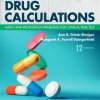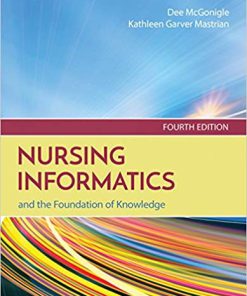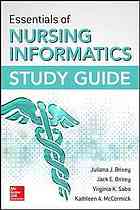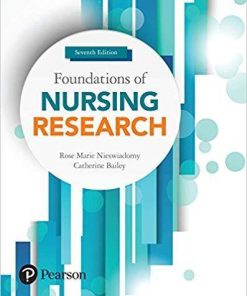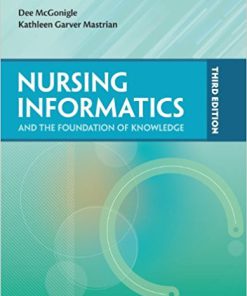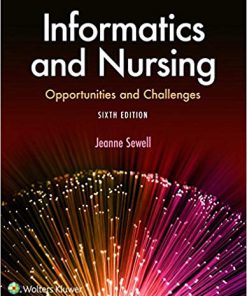Essentials of Nursing Informatics, 7th Edition Virginia Saba – eBook PDF
$50.00 Original price was: $50.00.$35.00Current price is: $35.00.
Essentials of Nursing Informatics, 7th Edition – Ebook PDF
Essentials of Nursing Informatics, 7th Edition – Ebook PDF Instant Delivery – ISBN(s): 9781260456783,1260456781
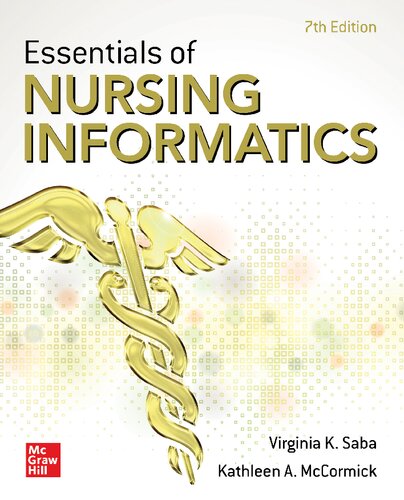
Product details:
- ISBN-10 : 1260456781
- ISBN-13 : 978-1260456783
- Author: Virginia Saba, Kathleen McCormick
Essentials of Nursing Informatics provides the information and insights readers need to manage and process data to improve the quality and outcomes of healthcare. Topics include the use of computers in nursing administration, practice, education, and research; computer systems and information theory; electronic medical records, continuum of care information technology systems, and personal health records; coding; and government, clinical, and private sector system requirements.
This revised and updated edition covers the latest changes in technology, administration, policy, and their effects on healthcare informatics in the U.S., with contributing international authors from Canada, South America, Europe, Asia, Australia, and New Zealand. The seventh edition includes section summaries, and each chapter includes sample test questions and answers.
Table of contents:
Part 1 — Nursing Informatics Technologies
1. Historical Perspectives of Nursing Informatics
2. Computer Systems Basics—Hardware
3. Advanced Hardware and mHealth
4. Computer Systems Basics—Software
5. Open Source and Free Software
6. Data and Data Processing
Part 2 — System Standards
7. Health Data Standards: Development, Harmonization, and Interoperability
8. Standardized Nursing Terminologies
9. Human–Computer Interaction
10. Trustworthy Systems for Safe and Private Healthcare
11. Social Determinants of Health, Electronic Health Records, and Health Outcomes
Part 3 — System Life Cycle
12. System Design Life Cycle: A Framework
13. System and Functional Testing
14. System Life Cycle Tools
Part 4 — Informatics Theory Standards
15. Healthcare Project Management
16. The Practice Specialty of Nursing Informatics
17. Foundations of Nursing Informatics
Part 5 — Policies and Quality Measures in Healthcare
18. Establishing Nursing Informatics in Public Policy
19. Quality Measurement and the Importance of Nursing Informatics
20. Using Six Sigma and Lean for Measuring Quality
21. Informatics Applications to Support Rural and Remote Health
22. Communication Skills in Health IT, Building Strong Teams for Successful Health IT Outcomes
23. Nurse Scheduling and Credentialing Systems
24. Mastering Skills that Support Nursing Practice
Part 6 — Nursing Practice Applications
25. Translation of Evidence into Nursing Practice
26. Improving Healthcare Quality and Patient Outcomes Through the Integration of Evidence-Based Practice and Informatics
27. Nursing Plan of Care Framework for HIT
28. Structuring Advanced Practice Knowledge: Curricular, Practice, and Internet Resource Use
29. Beyond EMR Implementation: Optimize and Enhance
30. Federal Healthcare Sector Nursing Informatics
31. Monitoring Interoperability, Device Interface, and Security
32. Population Health Informatics
33. Informatics Solutions for Emergency Planning and Response
34. Health Information Technology: Striving to Improve Patient Safety
35. Consumer Patient Engagement and Connectivity in Patients with Chronic Disease in the Community and at Home
Part 7 — Advanced Applications for the Fourth Nursing IT Revolution
36. New Models of Healthcare Delivery and Retailers Producing Big Data
37. Artificial Intelligence in Healthcare
38. Telehealth: Healthcare Evolution in the Technology Age
39. Nursing’s Role in Genomics and Information Technology for Precision Health
40. Big Data Analysis of Electronic Health Record (EHR) Data
41. Nursing Data Science and Quality Clinical Outcomes
42. Nursing Informatics Innovations to Improve Quality Patient Care on Many Continents
43. Global eHealth and Informatics
Part 8 — Educational Applications
44. Nursing Curriculum Reform and Healthcare Information Technology
45. The Evolution of the TIGER Initiative
46. Initiation and Management of Accessible, Effective Online Learning
47. Social Media Tools in the Connected Age
48. A Paradigm Shift in Simulation: Experiential Learning in Virtual Worlds and Future Use of Virtual Reality, Robotics, and Drones
Part 9 — Research Applications
49. Computer Use in Nursing Research
50. Information Literacy and Computerized Information Resources
People also search:
You may also like…
Medicine & Health Science
(Original PDF) Wong’s Essentials of Pediatric Nursing 10th Edition


